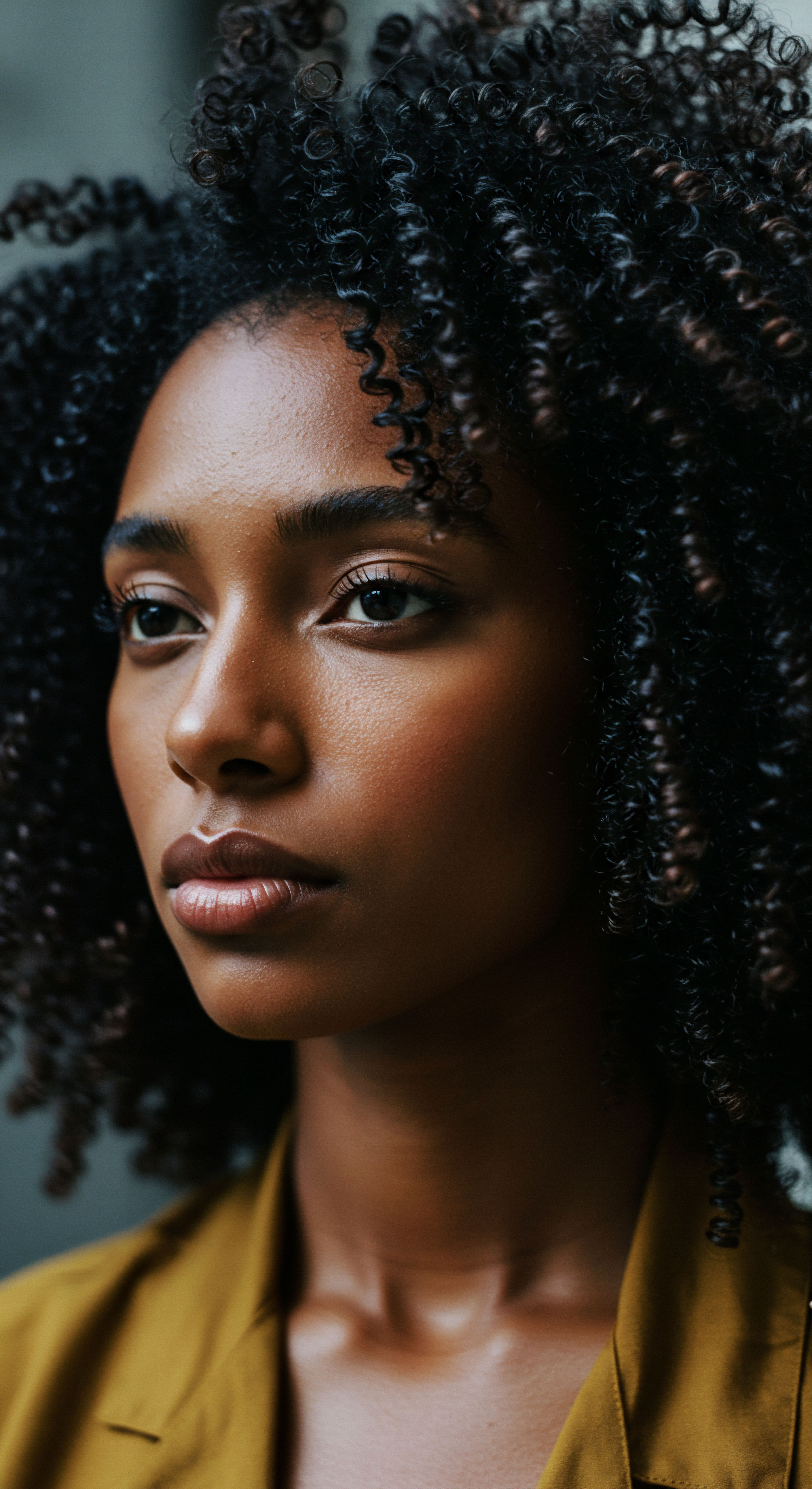
Roots
The desert’s breath, a whisper of dry air carrying fine dust, often brings to mind images of parched landscapes and relentless sun. Yet, within these seemingly unforgiving realms, ancient peoples did not merely survive; they cultivated a profound understanding of their surroundings, including the very strands that crowned their heads. Our hair, a testament to resilience, faces particular challenges in such climates. The persistent dryness saps moisture, leading to brittleness and breakage, while the intense solar radiation can degrade protein structures and alter natural pigmentation.
How, then, did those who lived intimately with these arid expanses safeguard their tresses, ensuring not only health but also the vitality that spoke to cultural identity? Their methods, far from rudimentary, reveal a sophisticated interplay of botanical wisdom, practical necessity, and a deep respect for personal adornment.
Consider the fundamental composition of hair. Each strand, a delicate yet durable protein filament, requires a balance of hydration and protection to maintain its structural integrity. In an arid environment, this balance is constantly under siege. The desert air, with its minimal humidity, acts as a powerful desiccating agent, drawing moisture from the hair shaft.
This process, known as xerosis, can render hair stiff, prone to splitting, and vulnerable to mechanical damage. The sun’s ultraviolet rays contribute a different kind of assault, breaking down keratin proteins and melanin, which can result in faded color and a compromised outer cuticle. Against these elemental forces, ancient cultures devised solutions that speak to an intimate knowledge of natural materials and their protective properties.
Ancient peoples living in arid lands developed intricate hair care methods, recognizing the profound impact of dry air and intense sun on hair’s delicate structure.
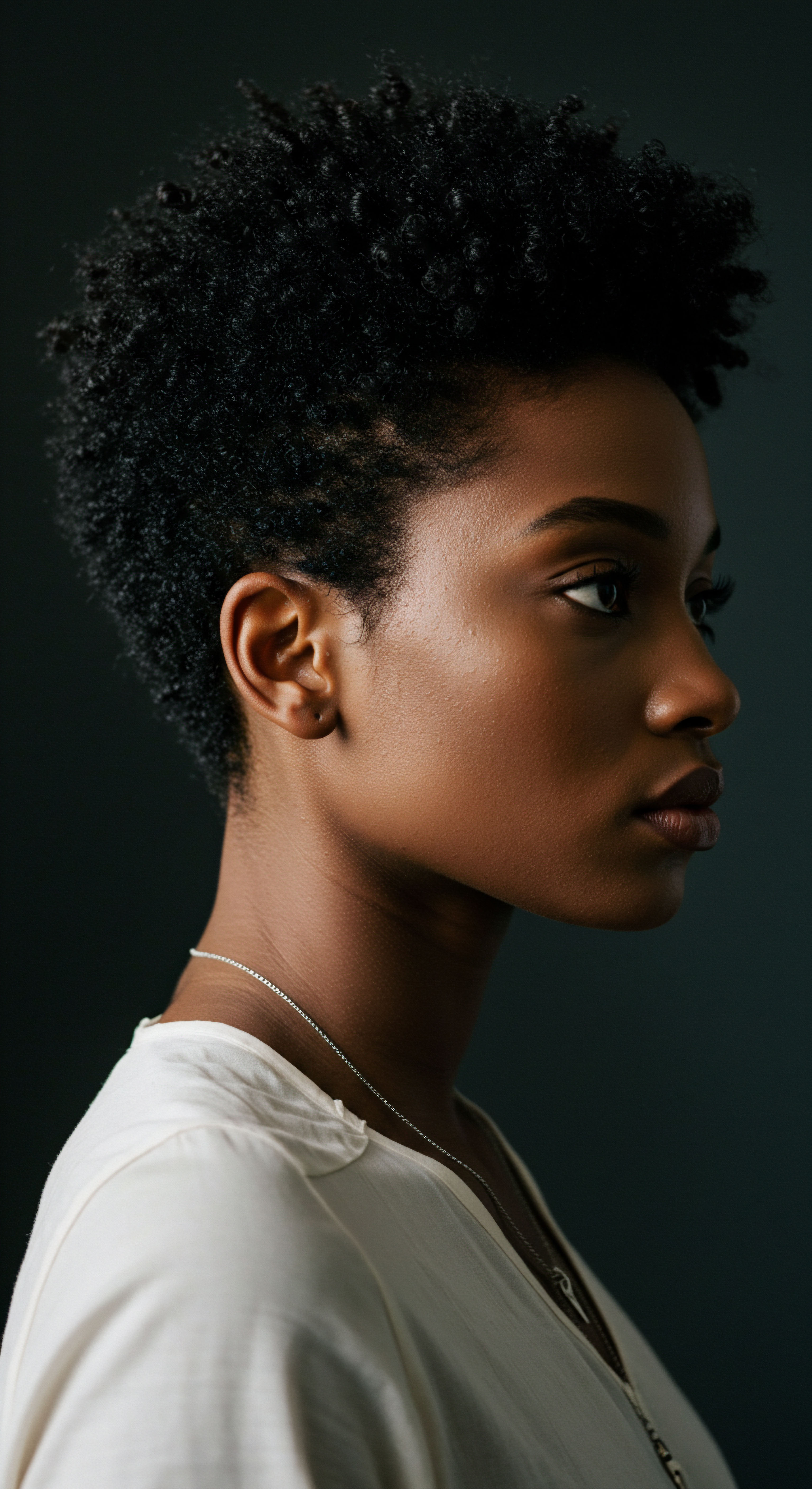
The Hair’s Elemental Vulnerability
The very structure of hair, primarily composed of a protein called keratin, responds acutely to environmental conditions. The outer layer, the cuticle, resembles overlapping scales, designed to shield the inner cortex. When moisture is scarce, these scales can lift, exposing the cortex to further dehydration and damage. This phenomenon accelerates in dry, windy conditions, which are hallmarks of desert environments.
Wind, a constant companion in these regions, can physically abrade the hair, leading to tangles and further mechanical stress. The particulate matter carried by the wind, such as sand and dust, acts as an abrasive, further compromising the hair’s surface.
Understanding these challenges, ancient communities did not simply react; they proactively integrated protective measures into their daily lives. These measures were not isolated practices but components of a holistic approach to well-being, where the body, including hair, was seen as deeply connected to the surrounding natural world. Their solutions were often rooted in the plants and minerals indigenous to their homelands, reflecting a profound ecological literacy.
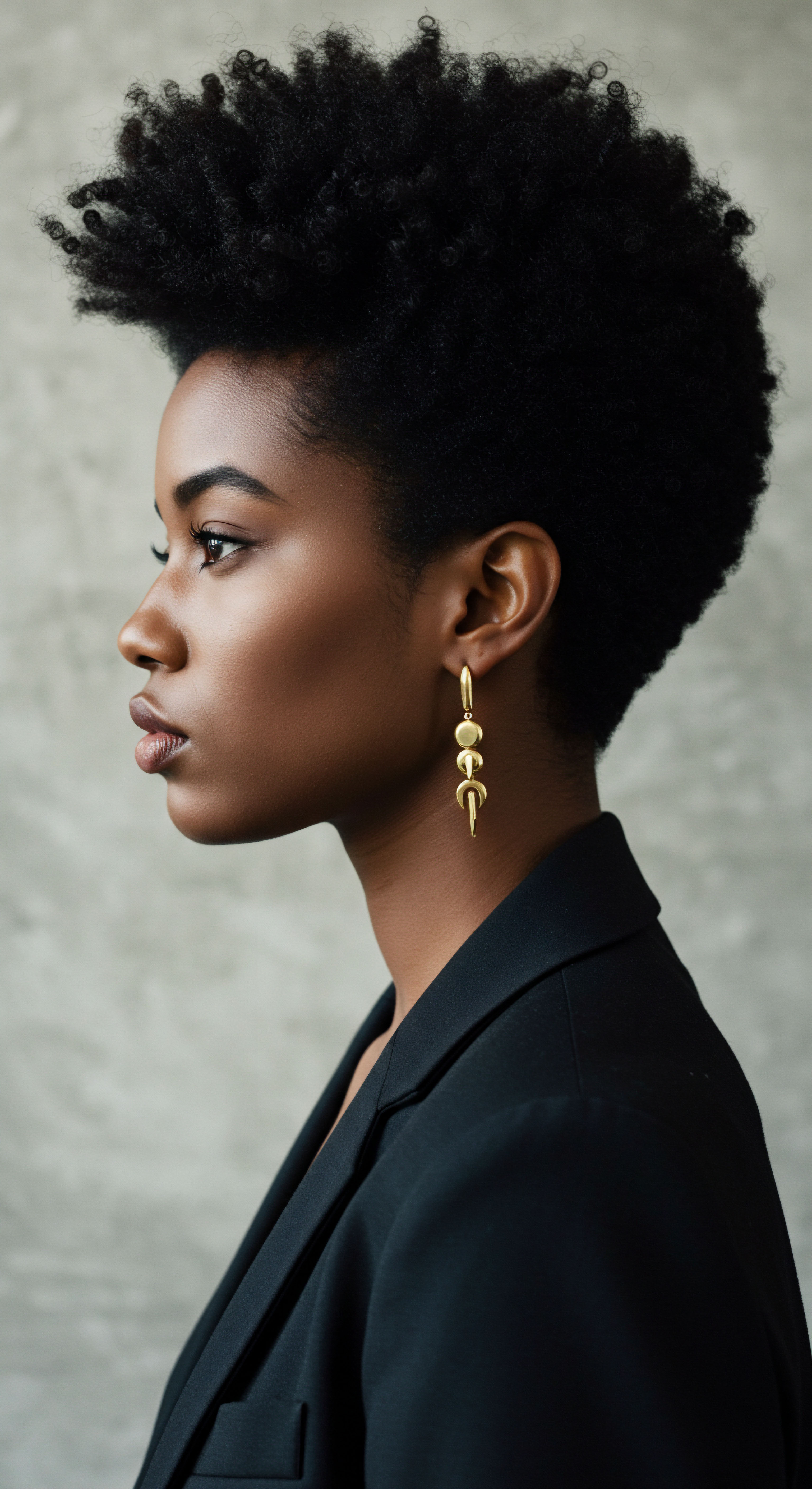
What Protective Elements Did Desert Flora Offer?
The desert, despite its austere appearance, harbors a surprising array of plants with remarkable properties for hydration and protection. Many desert plants have evolved mechanisms to retain water, produce natural emollients, or offer sun-screening compounds. These adaptations, honed over millennia, provided a ready pharmacopoeia for ancient hair care. For instance, the aloe vera plant, a succulent found in arid regions, stores a gel rich in vitamins, minerals, and enzymes.
This gel was widely used for its soothing and moisturizing qualities, offering relief to dry scalps and hydrating parched strands. Native Americans, among others, applied aloe vera to their hair and skin to protect against sun and harsh weather, keeping hair soft and silky.
Similarly, various oils extracted from desert-adapted trees became central to protective routines. Argan oil , sourced from the kernels of the argan tree indigenous to Morocco’s semi-arid regions, stands as a prime example. This “liquid gold,” as it was known, is rich in fatty acids and vitamin E, providing hydration and protection against environmental damage.
Berber women traditionally used it to maintain hair that shimmered even under the intense desert sun. The very presence of these plants, resilient in their own right, mirrored the human ingenuity in adapting to and thriving within these demanding landscapes.
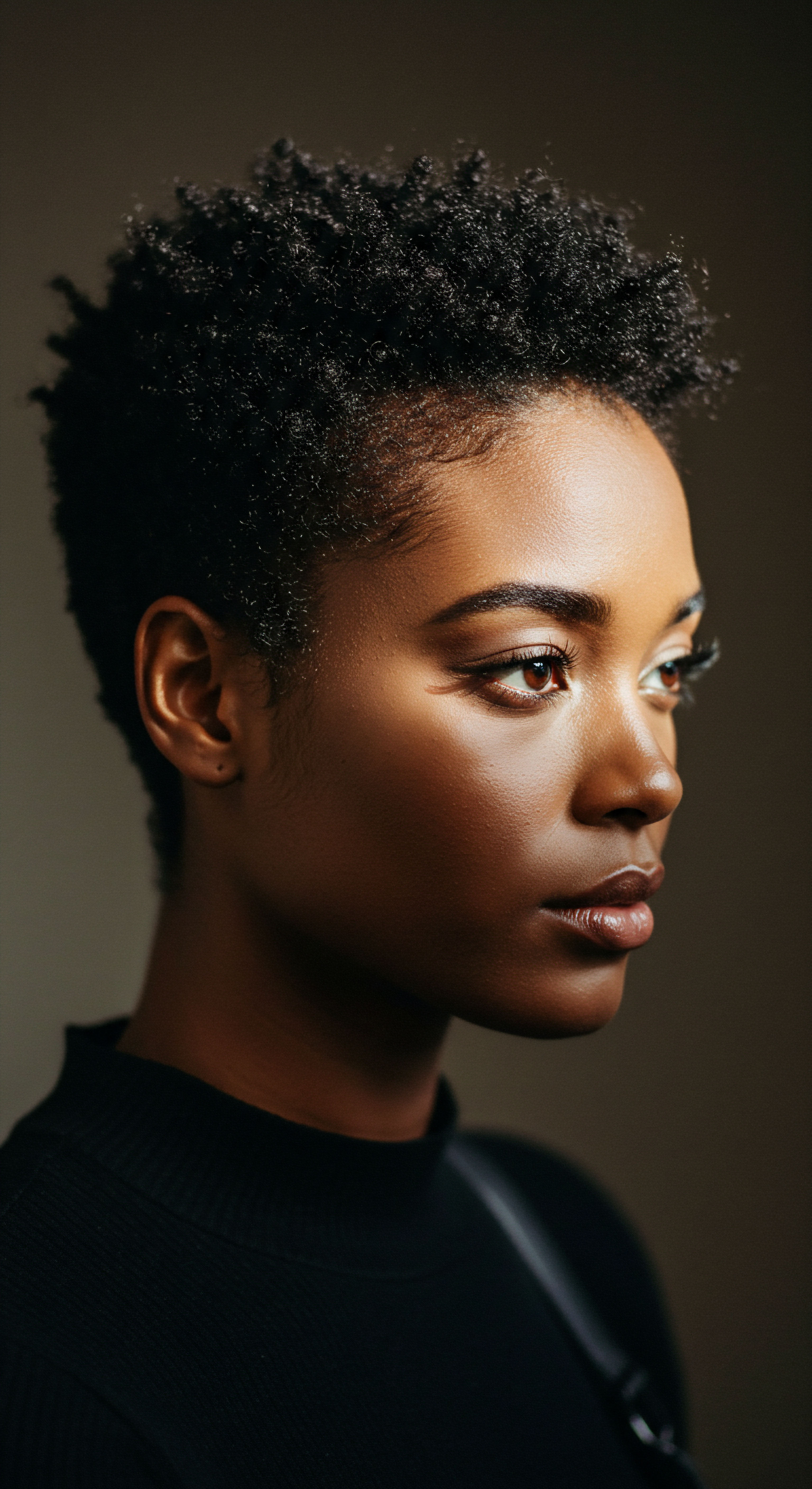
Ritual
Stepping into the world of ancient hair care rituals is to walk alongside those who understood the rhythm of their environment, recognizing that well-being was not a luxury but a daily commitment. The meticulous application of oils, the careful draping of fabrics, the braiding of strands—these were not mere acts of vanity but deeply ingrained practices, born of necessity and elevated to an art. For cultures dwelling in arid lands, the daily routine often began with preparing the hair for the relentless sun and drying winds, a practice steeped in a quiet, knowing wisdom.
The application of natural oils formed the cornerstone of many ancient hair protection strategies. These oils served multiple purposes ❉ they sealed moisture into the hair shaft, provided a physical barrier against environmental aggressors, and nourished the scalp. The Egyptians, for example, frequently used castor oil and almond oil to keep their hair hydrated and resilient against the harsh desert climate. These substances, rich in fatty acids, would coat the hair, reducing water loss through evaporation and lending a natural sheen.
Ancient hair care practices were deeply integrated into daily life, employing natural oils and physical coverings to shield hair from arid environmental stress.
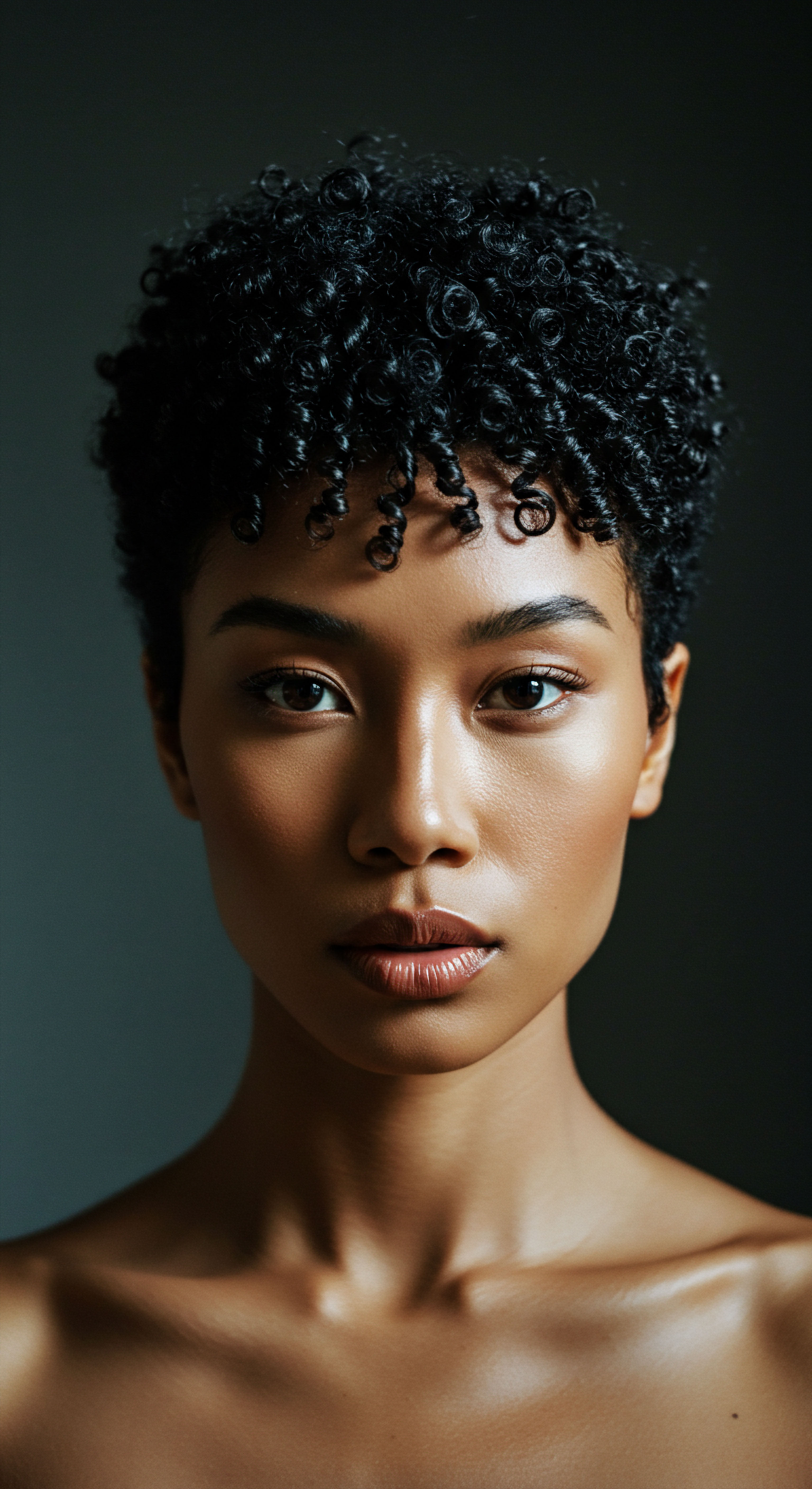
Oils and Their Protective Veil
The selection of oils was often dictated by local availability and perceived properties. In Mesopotamia, where the climate was torrid and windy, people at all societal levels anointed their bodies and hair with oil to soften skin and combat the dry atmosphere. This practice was so fundamental that body oils were sometimes part of workers’ wages. Beyond the common castor and almond oils, other botanical treasures found their way into hair regimens.
Pomegranate oil, abundant in antioxidants, vitamins, and essential fatty acids, served as a natural shield against environmental damage, helping hair remain vibrant despite the desert heat. Moringa oil, often called the “miracle oil,” was valued for its lightweight texture and rich antioxidant content, promoting scalp health and hair growth.
The method of application was as important as the oil itself. Rather than a quick application, ancient practices often involved massaging oils into the scalp and along the hair length. This action stimulated blood circulation to the hair follicles, potentially encouraging growth and delivering nutrients. Such methodical application also ensured even distribution, maximizing the protective benefits.
- Castor Oil ❉ Valued in ancient Egypt for its ability to hydrate and strengthen hair, combating the desert’s drying effects.
- Almond Oil ❉ A staple in Egyptian hair care, used for nourishment and protection against arid conditions.
- Argan Oil ❉ Revered by Berber women in Morocco for its fatty acids and vitamin E, offering hydration and protection from sun.

Physical Barriers to Environmental Harm
Beyond topical applications, physical coverings played a critical role in safeguarding hair from the elements. Headscarves, veils, and wigs were not solely for modesty or status; they provided a tangible shield against the relentless sun, abrasive winds, and dust. In ancient Egypt, linen headscarves were worn as early as 1350 BCE to protect from the sun. These coverings could be simple or ornately adorned, signifying wealth and social standing while serving a practical purpose.
Wigs, a distinctive feature of ancient Egyptian culture, served a dual function. Many Egyptians, both men and women, shaved their heads for hygiene and comfort in the scorching heat, wearing wigs to protect their scalps from the sun and to maintain an elegant appearance. These meticulously crafted hairpieces, often made of human hair, offered a layer of insulation against heat and a barrier against dust and insects.
Protective styling, such as braiding and updos, also served to minimize exposure and mechanical damage. Long hair, when left loose, is more susceptible to tangling, breakage, and environmental degradation. By gathering and securing hair in braids or buns, ancient individuals reduced its surface area exposed to the elements, preserving its condition. This concept of “protective styles” resonates even today within textured hair communities, where such methods are employed for length retention and overall hair health.
| Culture/Region Ancient Egypt |
| Key Topical Agents Castor oil, almond oil, pomegranate oil, moringa oil, henna, animal fats |
| Physical Protection Linen headscarves, elaborate wigs (often over shaved heads) |
| Culture/Region Mesopotamia |
| Key Topical Agents Various body oils, almond oil, honey |
| Physical Protection Head coverings (implied by climate needs) |
| Culture/Region Indigenous North America |
| Key Topical Agents Aloe vera, yucca root, sage, cedar |
| Physical Protection Head coverings (e.g. braids, ceremonial adornments) |
| Culture/Region North Africa (Berber) |
| Key Topical Agents Argan oil, baobab oil |
| Physical Protection Headwraps, veils |
| Culture/Region These methods highlight a blend of natural resources and practical ingenuity to preserve hair in challenging environments. |

Cleansing and Conditioning Innovations
Even the act of cleansing in arid environments required adaptation. Water scarcity meant that traditional lathering shampoos, as we know them, were not always feasible. Instead, ancient cultures often relied on gentler, less water-intensive methods.
Oil cleansing , for example, was a practice in ancient Egypt, where natural oils like castor and olive oil were massaged into the scalp and hair, then distributed with fine-toothed combs to dissolve impurities. This method, now gaining recognition in modern trichology, follows the principle that “like dissolves like,” effectively removing excess sebum and environmental pollutants without stripping the hair’s natural moisture barrier.
Other natural botanicals served as cleansers and conditioners. Indigenous tribes of North America utilized yucca root as a natural shampoo and conditioner, while others used sage and cedar for scalp and hair health. In parts of India, Ayurvedic practices incorporated herbal remedies such as amla and brahmi, along with herbal-infused oils, to strengthen hair and promote a healthy scalp. These cleansing and conditioning rituals, often performed with reverence, ensured that hair remained supple and clean without succumbing to the drying effects of harsh substances or the environment.
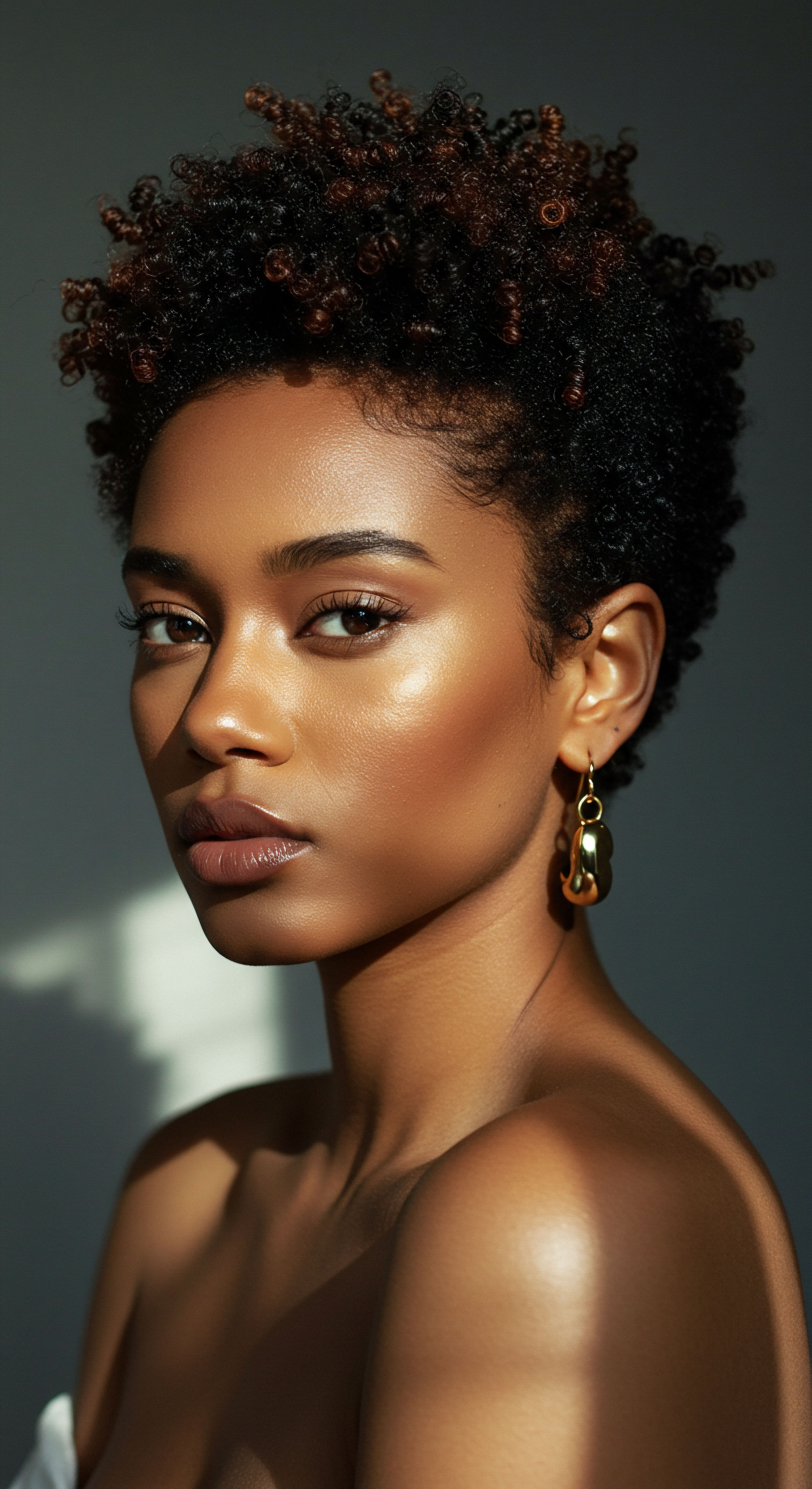
Relay
The story of ancient hair protection in arid climates is not a simple chronicle of survival; it is a complex narrative woven from biological necessity, cultural expression, and an intuitive grasp of environmental science. To truly grasp the depth of these practices, we must consider the hair itself as a biological archive, capable of retaining signatures of its environment and the substances it encountered. This understanding elevates our appreciation for the ingenious methods employed by our ancestors, revealing a sophisticated interaction between human ingenuity and the natural world.
Hair, in its remarkable resilience, offers clues to ancient lives. Its ability to withstand decay, particularly in dry, arid conditions, has allowed archaeologists and scientists to study ancient human remains and even discern aspects of their diet, health, and exposures. For instance, the extremely dry conditions of deserts like the Atacama and the Sahara have naturally preserved human hair fibers over millennia, providing invaluable material for isotopic analysis. This natural mummification of hair speaks volumes about its inherent protective qualities against biological degradation in such environments.
Hair, as a biological archive, offers unique insights into ancient lives and the effectiveness of traditional protective measures in arid environments.

What Does Ancient Hair Reveal About Life in Arid Lands?
Beyond external protective measures, the very composition of ancient hair, preserved in dry conditions, can tell a compelling story. A striking example of this is the chemical analysis of ancient human hair from archaeological contexts. Research has shown that hair can retain chemical signatures of substances ingested by individuals, even thousands of years ago. For instance, a study on human hair recovered from Es Càrritx cave on Menorca, dating back around 3,000 years, yielded Europe’s oldest direct evidence of people taking hallucinogenic drugs.
Chemical analyses detected psychoactive plant substances—atropine, scopolamine from nightshade plants, and ephedrine—that had been ingested and absorbed into the hair over nearly a year. This scientific discovery, while focusing on drug use, powerfully illustrates the remarkable preservative capacity of hair in specific environmental conditions, particularly dry ones. It suggests that hair, by its very nature, is a resilient biological structure, capable of encapsulating a history of interactions with its environment and the substances introduced to the body. This inherent resilience, allowing for such long-term preservation of chemical markers, underscores the foundation upon which ancient protective practices were built.
The presence of these chemical markers within the hair structure, enduring for millennia, points to hair’s incredible stability. This stability, coupled with external protective layers from oils and coverings, created a comprehensive defense system. The oils, as noted earlier, formed a physical barrier, but their fatty acid content also nourished the hair, potentially enhancing its intrinsic strength and flexibility, making it less prone to mechanical damage from the dry air and wind. The pigments within the hair, melanin, also provide a degree of natural photoprotection, a defense enhanced by physical coverings.
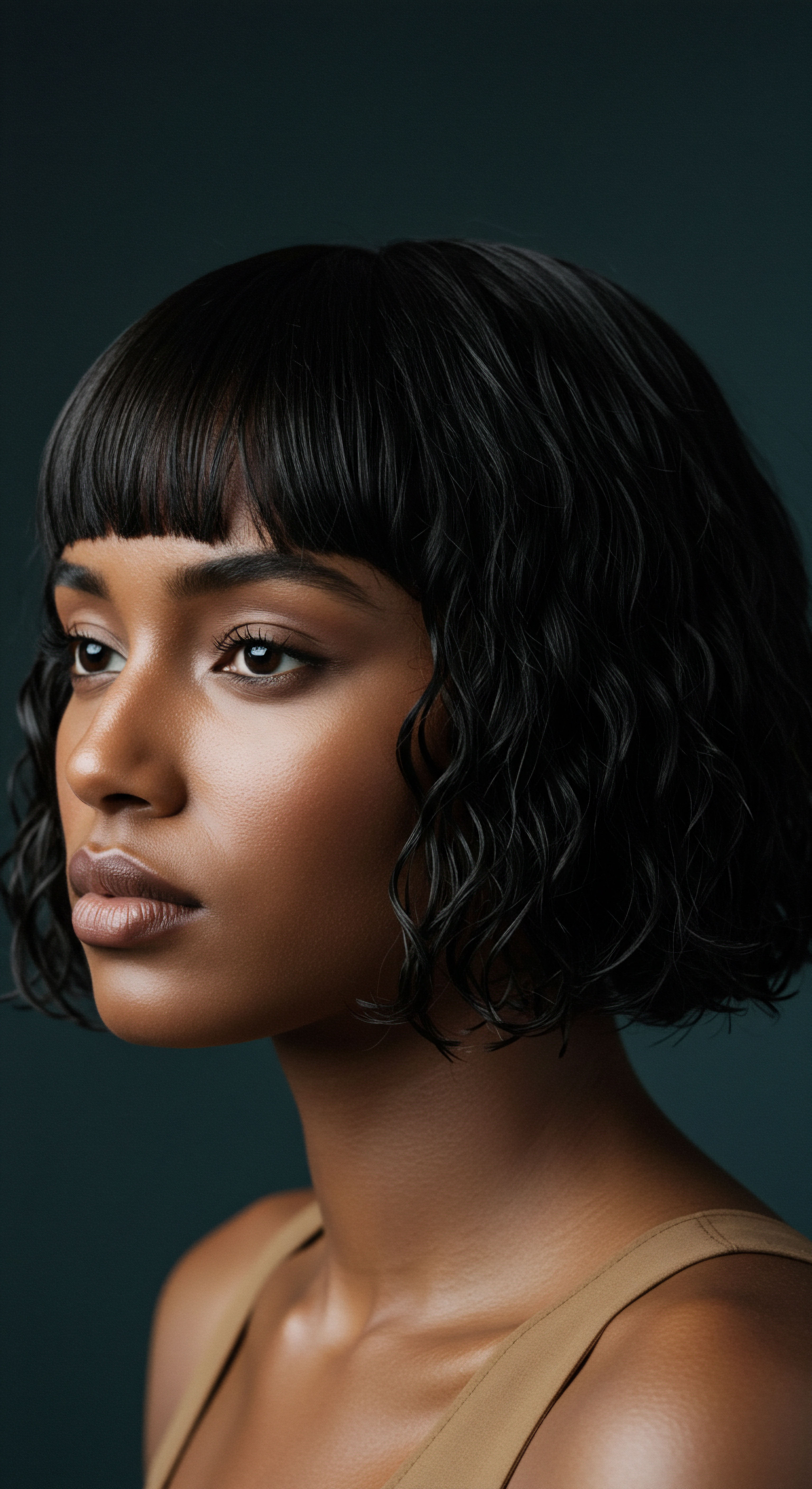
The Science of Botanical Shielding
The efficacy of ancient botanical treatments finds support in modern scientific understanding. The lipids in plant oils, such as those found in argan oil or coconut oil , can penetrate the hair shaft, reinforcing the cuticle and reducing protein loss. This internal conditioning complements the external barrier function. For instance, the oleic, palmitic, stearic, linoleic, and linolenic acids in argan oil, along with vitamin E, contribute to its moisturizing and protective properties.
Similarly, plant-based cleansers and conditioners, like yucca root or fermented rice water , offer more than just superficial benefits. Yucca contains saponins, natural foaming agents that cleanse gently without stripping. Fermentation, a technique used for centuries in Asian hair care, breaks down nutrients into smaller, more absorbable molecules, increasing their bioavailability.
This process also creates beneficial compounds, including organic acids that help balance scalp pH and strengthen the hair cuticle, resulting in increased shine and reduced frizz. The ancient wisdom of these practices is thus affirmed by contemporary biochemical analysis, demonstrating a profound, albeit empirical, understanding of hair biology.
Beyond individual ingredients, the concept of a holistic approach to hair care was deeply embedded. This extended to diet, stress management, and even spiritual practices, all recognized as contributing to overall health, which in turn reflects in the vitality of hair. The desert peoples understood that the external manifestation of health was a mirror of internal balance.
- Lipid Reinforcement ❉ Natural oils rich in fatty acids penetrate the hair shaft, reinforcing the cuticle and minimizing protein loss, a critical defense against arid dryness.
- Photoprotection ❉ Physical coverings, such as headwraps and wigs, offered direct shielding from intense solar radiation, protecting hair from UV degradation.
- Bioavailability Enhancement ❉ Techniques like fermentation, applied to plant extracts, increased the hair’s ability to absorb beneficial compounds, optimizing nourishment.
| Hair Component Keratin Proteins |
| Arid Climate Stressor UV degradation, dehydration, mechanical abrasion |
| Ancient Protective Action Oil coating, head coverings, protective styling |
| Hair Component Natural Lipids (Sebum) |
| Arid Climate Stressor Rapid evaporation, disruption by harsh cleansing |
| Ancient Protective Action Oil application (replenishment), gentle oil cleansing |
| Hair Component Melanin (Pigment) |
| Arid Climate Stressor UV fading, oxidative damage |
| Ancient Protective Action Head coverings, botanical dyes (e.g. henna) |
| Hair Component Cuticle Layer |
| Arid Climate Stressor Lifting and damage from dryness, abrasion |
| Ancient Protective Action Oil sealing, acidic rinses (e.g. fermented solutions) |
| Hair Component Ancient practices aimed to mitigate the specific impacts of arid environments on hair's biological structure. |

Reflection
The enduring legacy of ancient hair protection in arid climates extends far beyond historical curiosity. It is a profound testament to human ingenuity, a whisper from generations past reminding us of the deep connection between our bodies, our environment, and the wisdom of sustainable practices. The meticulous care, the thoughtful selection of natural elements, and the understanding of hair’s inherent vulnerabilities in challenging conditions speak to a holistic approach that modern hair care is only now beginning to truly revisit. These ancient rhythms of care, once born of necessity, now serve as a gentle invitation to consider our own relationship with our hair, not as a separate entity to be chemically altered or superficially treated, but as a living part of us, deserving of mindful attention and protection, just as it was for those who walked the desert lands before us.

References
- Orlando Pita Play. (2023). Haircare Rituals Around the World ❉ Exploring Global Traditions.
- Hale Cosmeceuticals. (2023). Ancient Beauty Secrets ❉ Skincare in Mesopotamia and Egypt.
- Dabur International. (2024). The Importance of Oiling in Hair Care | Top Natural Oils for Hair Growth and Thickness in Saudi Arabia.
- Carmesi. (2022). 7 Ancient Ways To Wash And Condition Your Hair.
- LuxCare. The Evolution of Headscarves ❉ from ancient Egypt to the red carpet.
- Egyptra Travel Services. (2025). From Ancient Egypt to Modern Beauty ❉ Timeless Cosmetic Secrets.
- Reddit. (2016). When did head-coverings/veiling start? ❉ r/history.
- Kenra Professional. The History of Haircare ❉ How Past Practices Shape Modern Routines.
- Encyclopedia.com. Hairstyles and Headgear.
- The Creative Contessa. No Naked Heads! (Medieval hats, veils, coifs, headdresses, etc. briefly).
- JD Institute of Fashion Technology. (2021). HEADWRAPS ❉ HISTORY AND EVOLUTION.
- The De Caversham Household. (2014). Guide ❉ Historical Women’s headwear.
- Mora, A. (2022). Stable carbon and nitrogen isotope analysis of archaeological human hair. Journal of Archaeological Science ❉ Reports, 43, 103439.
- Adewale, O. et al. (2022). Cosmetopoeia of African Plants in Hair Treatment and Care ❉ Topical Nutrition and the Antidiabetic Connection? MDPI.
- Afrin, S. et al. (2020). Hair Oils ❉ Indigenous Knowledge Revisited. Pharmacognosy Reviews, 14(27), 35-43.
- Moss, C. (2017). Ancient Mesopotamian Beauty, Hairstyles and Toilets. Daily Beast.
- ANCIENT EGYPTIAN HAIR AND BEAUTY.
- Choudhary, A. et al. (2020). Ethnobotanical Studies of Some Important Desert Plants of Churu, Rajasthan. International Journal of Current Research in Life Sciences, 9(12), 4875-4880.
- Worthington, R. D. (1998). ETHNOBOTANICAL INFORMATION, CHIHUAHUAN DESERT GARDENS, CENTENNIAL MUSEUM, UNIVERSITY OF TEXAS AT EL PASO.
- GDSHJKLW. Egyptian Pyramid in Desert Drying Hair Caps Super Absorbent Soft Hair Drying Towel Quick Dry Coral Velvet Hair Drying Cap Hair Turban for Women Wet Hair Long Thick Hair. Amazon.com.
- Chun, H. S. & Park, K. M. (2013). A Study on the Hair Removal Culture of Ancient Egypt. Journal of the Korean Society of Cosmetology, 19(1), 125-134.
- The Earth Collective. (2023). Hair Care Routines for Diverse Indian Climates.
- Kirkinen, T. & López-Costas, O. (2022). Preservation of microscopic fur, feather, and bast fibers in the Mesolithic ochre grave of Majoonsuo, Eastern Finland. PLOS One, 17(9), e0274737.
- Zaid, R. (2024). Five Beauty Secrets of the Ancient Egyptians. Preneur World Magazine.
- Waller, R. (2015). Hair Straightening and Hair Dyes ❉ Facts and Controversies. In A. B. M. Abdullah (Ed.), Clinical Dermatology (pp. 301-318). InTech.
- Guerra-Doce, E. et al. (2023). Hair analysis reveals Europe’s oldest physical evidence of drug use. Science News.
- Shunji Matsuo Singapore Premier Japanese Hair Salon & Expert Haircuts. (2024). Unveiling Ancient Hair Treatment Methods You Might Not Know.
- ICT News. (2014). 5 Reasons Natives Have Lustrous Locks ❉ Ancient, Indigenous Hair Remedies.
- Colomas, J. (2023). Unlock Ancient Hair Care Secrets ❉ Discover Global Rituals for Lustrous Locks.
- Amazingy Magazine. (2024). A History of Haircare.
- Rolling Out. (2025). The ancient haircare secret that’s backed by modern science.
- National Academic Digital Library of Ethiopia. The Chemistry and Applications of Sustainable Natural Hair Products.
- Issa Naturale. (2024). The Timeless Tradition of Hair Oiling ❉ A Middle Eastern Beauty Secret.
- Byrdie. (2024). 12 Native American Beauty Secrets.
- Rahman, S. U. et al. (2023). Ethnobotanical Advancements in Contemporary Skincare. In Handbook of Research on Advances in Health Technology and Medicine (pp. 1-25). IGI Global.
- Arab News. (2012). The secret of ancient Egyptian beauty.
- Zouhair, R. et al. (2023). Ethnobotanical studies of some medicinal and cosmetic plants used in the province of Sefrou, Middle Atlas of Morocco. ResearchGate.
- Global Beauty Secrets. (2022). Oil ❉ The ancient elixir of the East.
- Katherine Haircare. (2022). Historical Hair Care Grew My Hair to Hip Length! Here’s How.
- Reddit. (2023). Taking care of hair ❉ r/IndianCountry.
- Rosso, M. (2018). Comparing Mummification Processes ❉ Egyptian & Inca. The EXARC Journal, 2018(2).
- Rihuete-Herrada, A. et al. (2023). Drugs in prehistory ❉ Chemical analysis of ancient human hair. Scientific Reports, 13(1), 5413.
- Kintz, P. (1997). Hair analysis in toxicology. Forensic Science International, 88(1), 1-10.
- World History Edu. (2024). What was Daily Life in Ancient Mesopotamia like?
- Gromov, A. V. et al. (2023). Mercury in Hair of Mammoth and Other Prehistorical Mammals as a Proxy of Hg Level in the Environment Associated with Climate Changes. Toxics, 11(3), 273.
- Castro, M. (2024). Drugs in prehistory ❉ Chemical analysis of ancient human hair. ResearchGate.
- Guzman, A. (2016). What is the best way to store human hair from archeological contexts? ResearchGate.
- World History Encyclopedia. (2014). Daily Life in Ancient Mesopotamia.